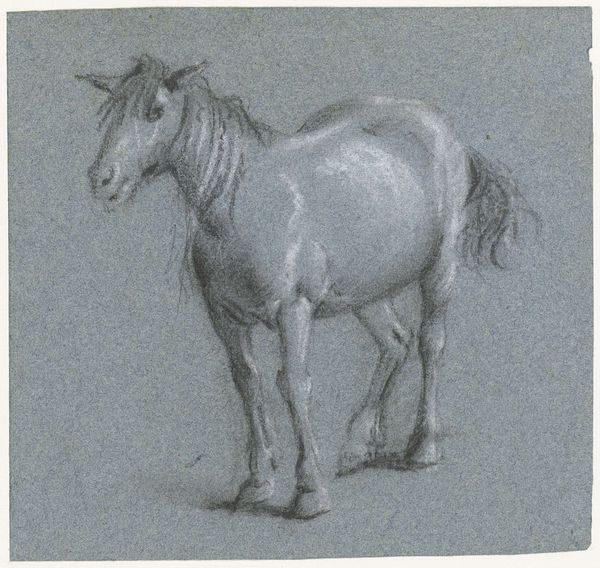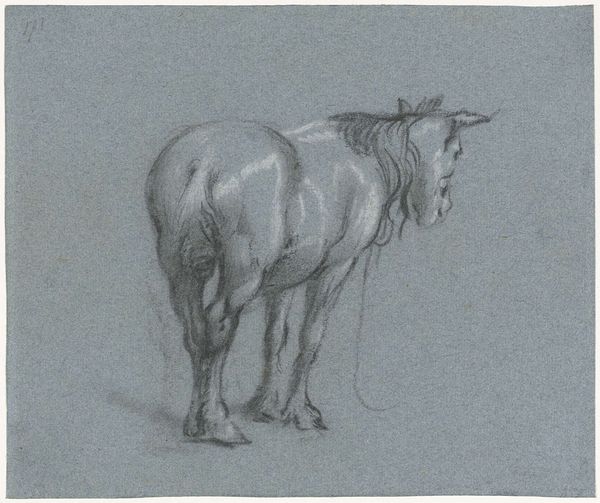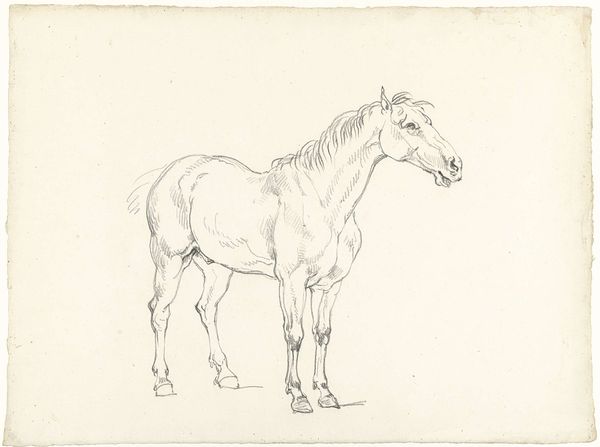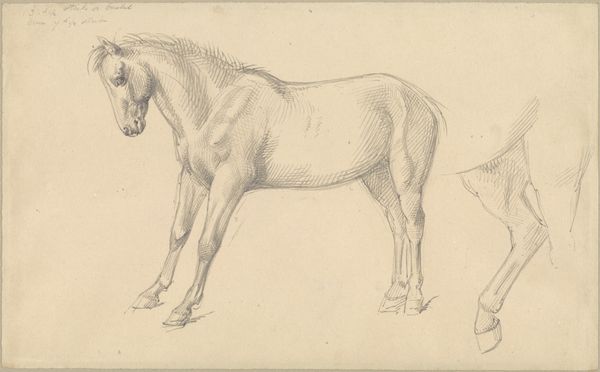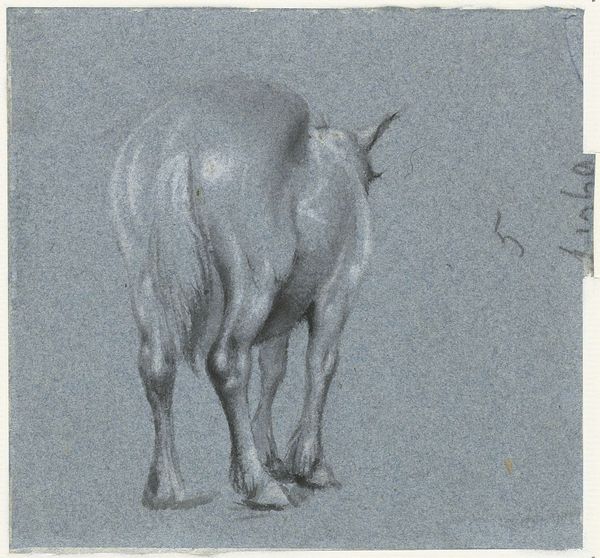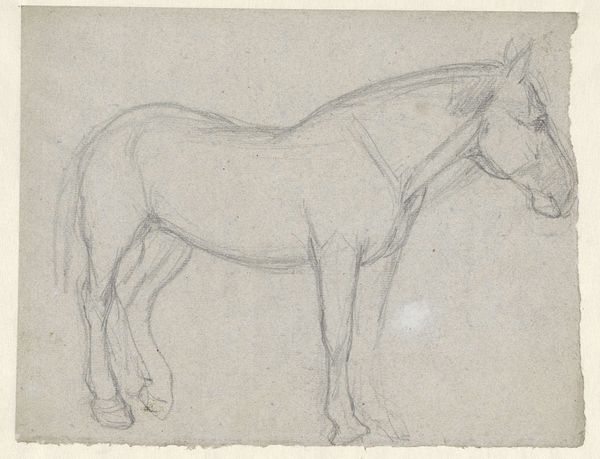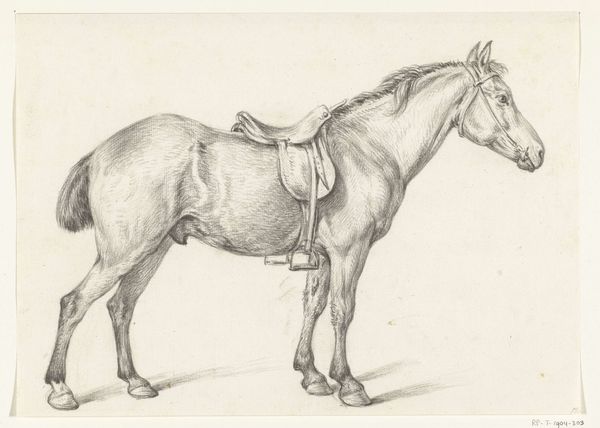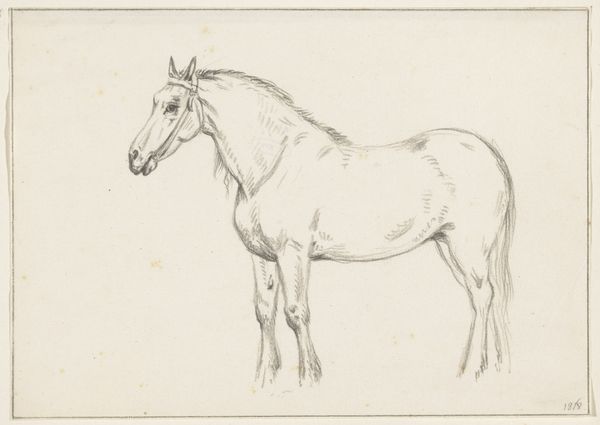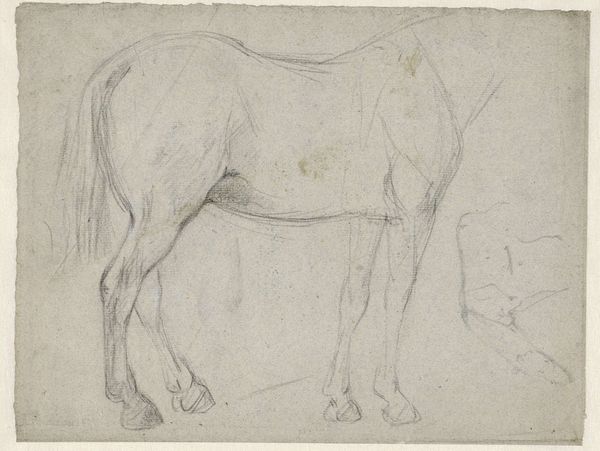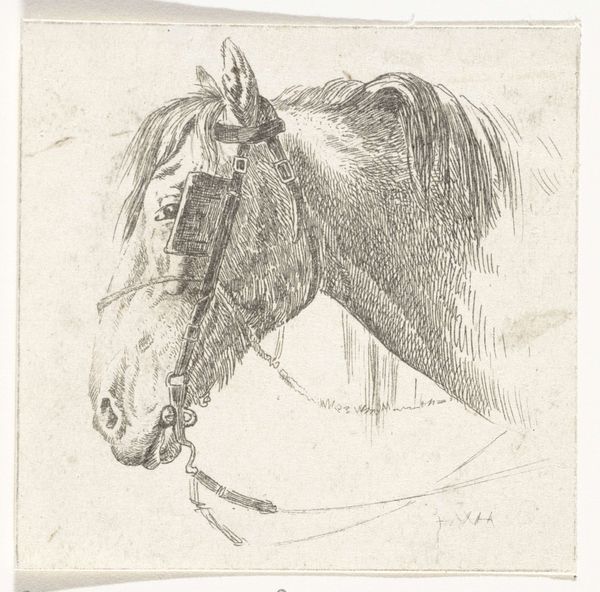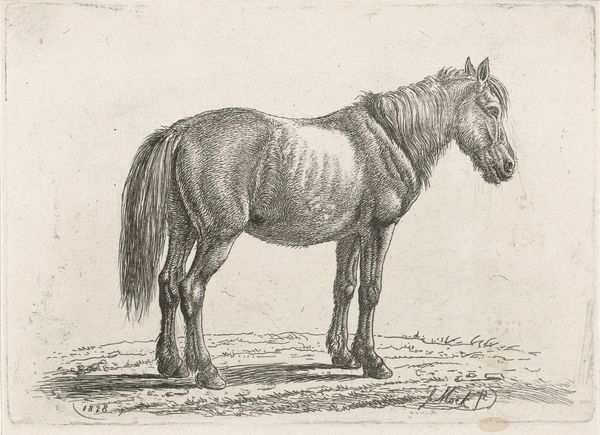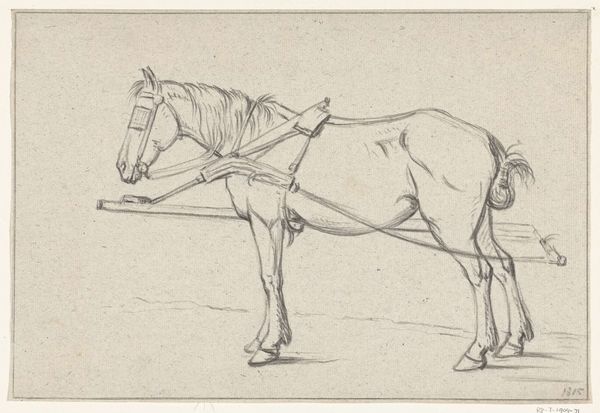
drawing, pencil
#
pencil drawn
#
drawing
#
dutch-golden-age
#
pencil sketch
#
landscape
#
pencil drawing
#
pencil
#
realism
Dimensions: height 115 mm, width 109 mm
Copyright: Rijks Museum: Open Domain
Curator: We're standing before "Paard in profiel, naar links," or "Horse in Profile, Facing Left," a work crafted around 1660 by Moses ter Borch. This subtle yet captivating drawing employs pencil on paper. It resides here at the Rijksmuseum. What strikes you first about it? Editor: It’s so quiet, almost like catching a stolen moment. The horse isn't performing; it's just *being*. There's a peaceful quality, even with just the pencil lines on paper. Curator: Indeed. The use of pencil in this era offers a directness, a closeness to the artist's initial perception. Observe the varying pressure of the lines – how they define the form, suggest light and shadow. Ter Borch's mark-making constructs a palpable volume with very limited means. Editor: It does feel incredibly immediate, doesn't it? I can almost see Ter Borch making quick decisions, correcting lines. You can feel the artist figuring out the horse’s stance in front of you. Curator: Precisely. This sketch has less to do with idealism and more to do with observation. He emphasizes naturalism, very much rooted in the traditions of Dutch Golden Age art but executed with the fresh sensibility of a drawing. Editor: And that realism, even in its simple form, makes it very intimate. It’s more personal than those grand oil paintings you see from the same time. The focus isn’t on power or beauty but simply… the horse itself. Curator: The beauty resides, in fact, within that directness. This realism gives way to an engagement with the quotidian, something we don't often think of when envisioning "historical art." This piece achieves something timeless. Editor: Looking at this has calmed my own horse! No, I mean, it’s reminded me that simple can be utterly profound. A sketch, quickly jotted down, capturing an entire spirit in those simple lines and careful shadings. Beautiful. Curator: I agree wholeheartedly. It underscores the potential within art—even within the humblest of materials—to affect our perception, not just of art history but also, ultimately, of the world.
Comments
No comments
Be the first to comment and join the conversation on the ultimate creative platform.
